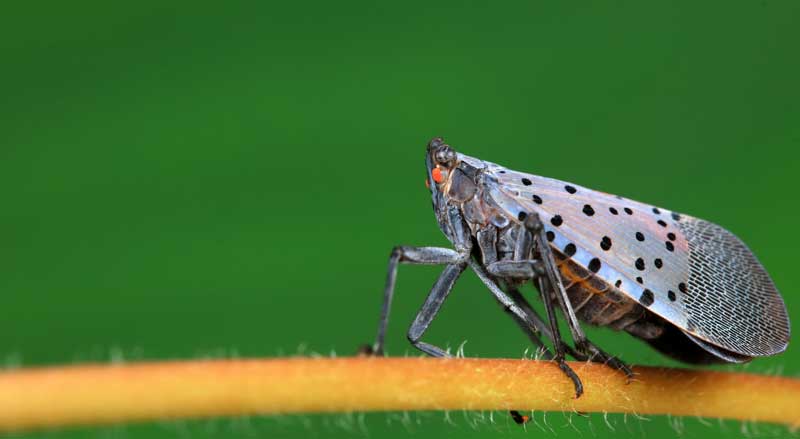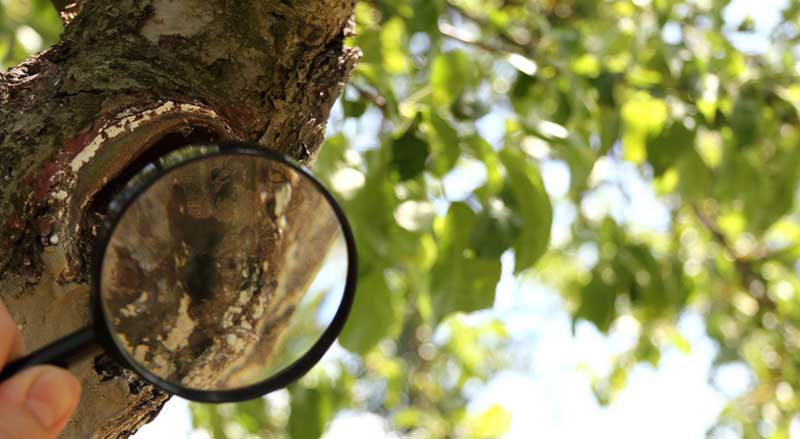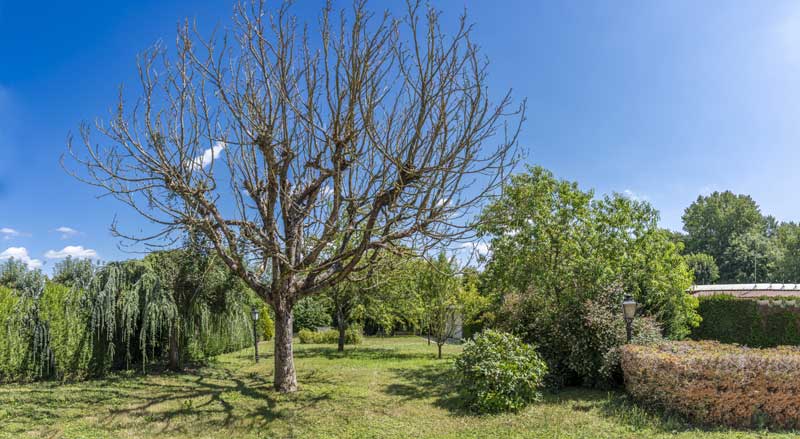If you live in New Jersey, chances are you’ve already heard about the Spotted Lanternfly (SLF)—a striking insect with colorful wings but devastating consequences for trees, shrubs, and landscapes. First discovered in the United States in 2014, the Spotted Lanternfly has spread rapidly, feeding on the sap of over 70 plant species and leaving behind sticky residue and sooty mold, which weakens valuable trees and vines.
For homeowners, commercial property managers, and HOA communities, controlling harmful pests is not just a matter of curb appeal—it’s essential for protecting the long-term health and value of their landscapes. Understanding the seasonal life cycle of the Spotted Lanternfly is crucial for disrupting infestations, and professional intervention from licensed arborists is the most effective path forward.
Spring: The Nymph Stage Emerges
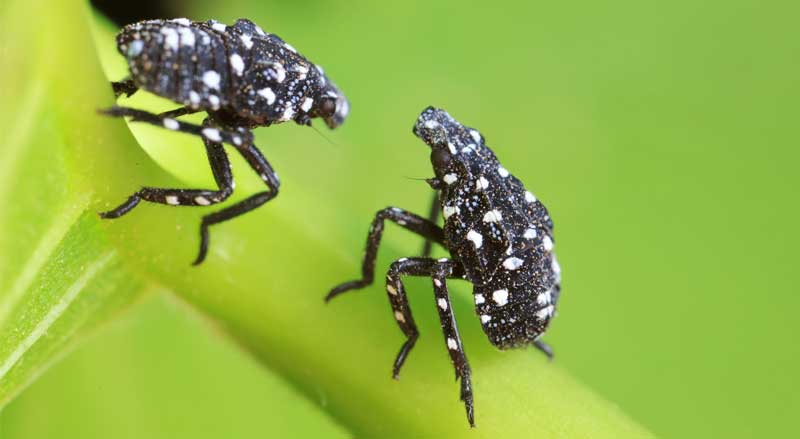
By late April through early June, Spotted Lanternfly eggs begin to hatch, releasing small black nymphs covered in white spots. At this stage, they are small, mobile, and hungry. They climb trees and shrubs in search of sap, and because they are not yet flying, they concentrate their damage on the lower canopy.
What can be done:
Certified arborists can identify early infestations before they spread widely. By applying targeted treatments in spring, professionals can reduce the survival rate of nymphs and protect tender new growth on ornamental trees, fruit trees, and valuable landscaping plants. Early intervention in the spring sets the tone for controlling the population throughout the year.
Summer: Mature Nymphs, Adults, and the Tree of Heaven
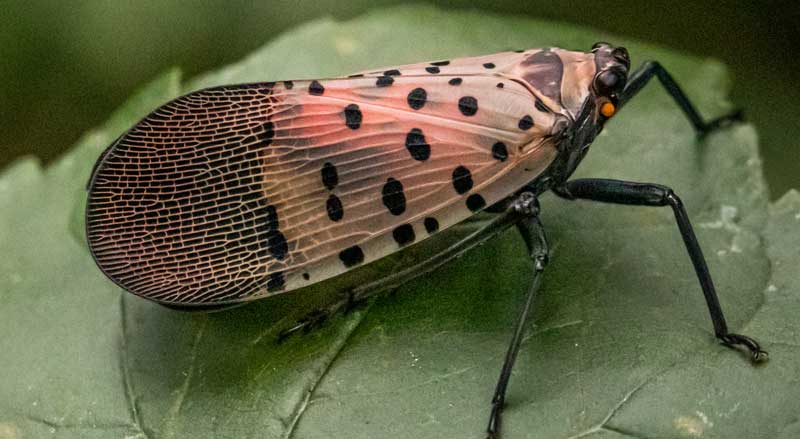
As summer progresses (June through August), nymphs grow larger and transition to their red-and-black spotted stage. By late July and August, many develop into winged adults, which are highly mobile and capable of spreading quickly across landscapes.
One reason Spotted Lanternflies multiply so aggressively is their reliance on the Tree of Heaven (Ailanthus altissima), an invasive species common throughout New Jersey. SLFs are strongly attracted to this tree, using it as a feeding and breeding hub. Left unchecked, these “trap trees” can support large populations that spill over into surrounding landscapes.
Why August and September are critical:
This is when adult Spotted Lanternflies feed most aggressively in preparation for laying eggs. Interrupting the cycle during these months is essential. Professional intervention, including the removal or treatment of Tree of Heaven, while protecting desirable trees, can drastically reduce SLF populations before they reproduce.
What can be done:
Trees Unlimited NJ’s licensed arborists provide safe Tree of Heaven removal, preventing SLFs from gathering in large numbers. Just as importantly, our team can recommend and plant healthier replacement species—native shade trees, ornamentals, or flowering trees that enhance your property without inviting pests. This will ensure you are compliant with local ordinances regulating tree removal and tree replacement guidelines.
Fall: Egg Mass Season
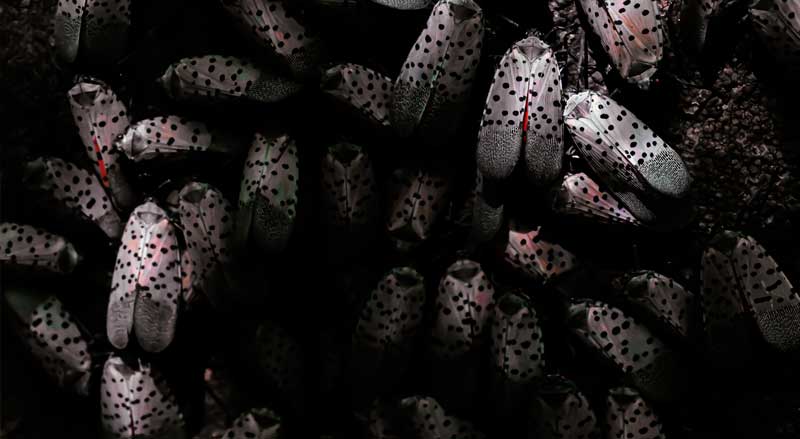
From September through November, adult females lay egg masses—each containing up to 50 eggs—on nearly any outdoor surface: tree bark, patio furniture, siding, vehicles, and even playground equipment. These egg masses are the source of next year’s infestation.
What can be done:
Professional inspection and treatment in the fall is essential. Arborists are trained to locate egg masses in hard-to-see places and remove or treat them safely. Licensed applicators also use targeted strategies that prevent future hatching without harming non-target wildlife or beneficial insects. This critical step, implemented between September and November, breaks the cycle at its root, stopping next year’s infestation before it begins.
Winter: Planning and Prevention
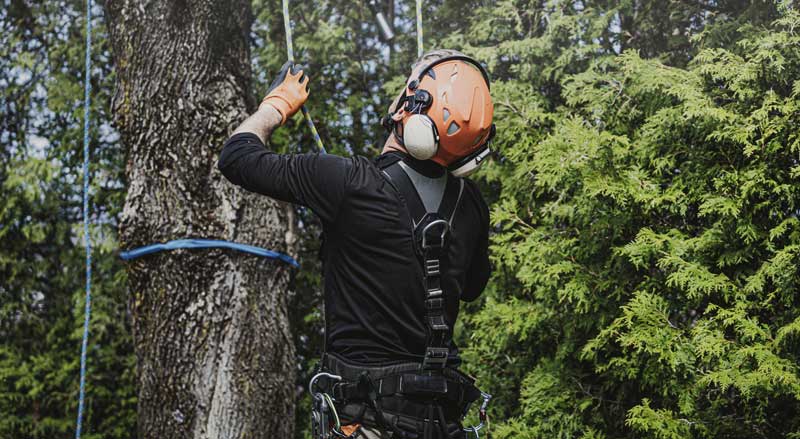
While Spotted Lanternflies remain dormant inside their egg masses through the cold months, winter provides an opportunity for long-term planning and property protection. Arborists can evaluate vulnerable tree species on your property—such as maples, black walnut, birch, and Tree of Heaven—and recommend strategies for selective removal, treatment, or replacement before the next season begins.
What can be done:
Trees Unlimited NJ offers winter assessments and management plans tailored to each property. If Tree of Heaven is present, our experts will design a safe removal plan and help you select new trees that not only add beauty but also strengthen the resilience of your landscape.
Why Professional Help Matters
While you may be tempted to try do-it-yourself remedies, the reality is that certified professionals are best suited to handle Spotted Lanternfly management. Misapplied treatments can damage your trees, harm beneficial pollinators, or fail to effectively reduce populations.
Trees Unlimited NJ is staffed with ISA-certified arborists and holds all required New Jersey pesticide licenses, ensuring every treatment is safe, targeted, and compliant with state regulations. Our team uses an Integrated Pest Management (IPM) approach, combining selective treatments, safe tree removals, monitoring, and expert planting guidance to create a sustainable solution for your property.
Protect Your Property Year-Round
The Spotted Lanternfly isn’t going away on its own. But with seasonal monitoring, targeted professional treatments, and thoughtful tree management, it is possible to control infestations and protect the trees, shrubs, and landscapes that make your property thrive.
Don’t wait until SLFs overrun your trees—especially in the critical months of August and September. Contact Trees Unlimited NJ today for a professional inspection, Spotted Lanternfly management, and a customized plan to safeguard your property. Call us now- 973.628.8733

